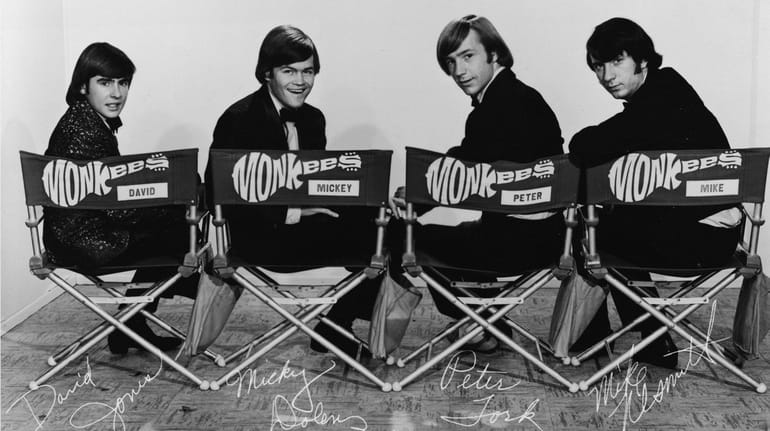My Turn: Peter Tork's death took part of my baby boomer childhood

The Monkees, dressed in tuxedos. From left, Davy Jones, Mickey Dolenz, Peter Tork and Michael Nesmith. Credit: Getty Images / NBC Television
When Peter Tork died Feb. 21, so did part of my baby boomer childhood.
I was 9 in 1966, the year “Last Train to Clarksville” single was released in August and “The Monkees” TV series began airing in September. I was completely in tune — with the concept, the show and the music.
The show was created for me, for my generation. I loved the Beatles — I still remember being completely mesmerized watching them on “The Ed Sullivan Show” just two years before — but the Beatles had somehow moved on from those early days.
The Monkees was my band — Davy Jones was the oh-so-cute frontman, Micky Dolenz was the off-the-wall drummer, and Mike Nesmith was the serious guitarist who wore the funny hat.
Peter was Peter. His shaggy blond hair stood out, as did his radiant smile. To me, he was the fourth member of this four-man group, but without a discernible role as the others had — other than to play dumb. You have to be smart to play dumb, and Peter seemed to be pretty bright amid his dumbness.
As for the Monkees, it didn’t matter to me that they generally did not play their instruments on their first two albums. Nobody really cared about this except the emerging rock intelligentsia, a movement led by Jann Wenner of Rolling Stone magazine.
All I knew was the Monkees were reaching the heights of rock stardom and becoming every bit as popular as the Beatles.
In fact, my mother — who was raised on Broadway show tunes and was our family’s unproclaimed cultural ambassador — did not like the way the Beatles were progressing with their music. She perceived in their music veiled drug references and more way-out tunes, so she bought my sister and me our first Monkees records. They were safer havens for our musical tastes, she thought.
Fame can be fleeting, and the Monkees’ fame lasted about two years. The once-ubiquitous band was shoved aside by new sounds, including by Jimi Hendrix, once their opening act.
After “The Monkees” show ended, the group had one more try at relevance, the out-of-sight film “Head,” but soon after, Peter tired of the grind and opted out.
For the next 20 years or so, I would read bits of Tork’s post-Monkees life — alcoholism, drug possession, and his years as a teacher. The other Monkees had moved on, too, but would forever be labeled “Monkees,” whether they liked it or not.
Me, I had married, had a child, divorced and was also trying to find my own way during those years. I gained a certain kinship with Peter and his plight as I struggled with my own.
When the Monkees became a hot commodity again, resurging to respectability, I also surged, meeting the girl of my dreams, marrying and having another child.
And I still supported the Monkees, lock, stock and barrel, going to every concert I could. While it was never with the original foursome, Peter was always there. The wide grin from 1966 had returned.
He seemed to be having so much fun performing, and I, too, was having so much fun watching him and enjoying my own life.
We all grow older. I did, Peter did, and the other Monkees did. Davy left us a few years ago.
But Peter’s death hit me harder since his ups and downs had paralleled my own. In my mind, I’d supposed he would live into eternity.
The Monkees are not in the Rock and Roll Hall of Fame; they haven’t been nominated for that honor. That once bothered me, but it doesn’t anymore. What counts is that they are in my personal Rock and Roll Hall of Fame.
And Peter, who always seemed to be on the outside looking in, simply epitomized to me that one can ride on the roller coaster of life — experience the ups and downs — and still come out on top.
Larry Lapka,
Massapequa Park
